The following Python3+ code attemps to compile a Cpp script and use it to convert from float to int while leaving the memory untouched; it is as follows:
import sys, os
import numpy as np
import matplotlib.pyplot as plt
# Build a C++ Script that accepts a str,
# converts it to a float, and prints
# the result of the operation
def build():
script = """
#include<iostream>
int main(int argc, char *argv[]){
float f = std::stof(argv[1]);
int i = *(short *)&f;
std::cout << f << " " << i <<std::endl;
return 0;
}
"""
with open('script.cpp', 'w') as f:
f.write(script)
return 1
# Loads the results from the C++ script
def load_results():
x,y = [],[]
with open('results-ctest.txt', 'r') as f:
result = f.readlines()
for _ in result:
local = _.split(' ')
x.append(float(local[0]))
y.append(int(local[1][:-2]))
return x,y
# Plots the results from the C++ script
def show_results(x,y):
# Define a figure
f,ax = plt.subplots()
# Plot results
ax.scatter(x,y)
# Format the axis according to the shown figure
ax.set_xticks(np.linspace(min(x), max(x), 20))
ax.set_yticks(np.linspace(min(y), max(y), 20))
plt.show()
if __name__=='__main__':
# build the C++ script
build()
# Compile the C++ script
# and clean the previous results
# by removing "results-ctest.txt"
os.system(f'g++ script.cpp')
os.system('rm results-ctest.txt')
# Generate 500 floats between -1.000.000 and 1.000.000
# and pass them to the C++ script
numbers=np.linspace(-1e6, 1e6, 500)
for number in numbers:
os.system(f'./a.out {number}>> results-ctest.txt')
# Open the results of the C++ script and
# split the input from the output
x,y = load_results()
# Produce the figure and open
# a window for it
show_results(x,y)
The apparent problem is that the (output) integers vs (input) floats are as follows:
Nevertheless, if both "int" and "float" are implemented with 4 bytes according to the following figure then the input and the output should have the same sign.
The summary is that what follows is being used to create an int using C++ and the sign of it is not being preserved according to what is shown in the first figure.
float f = std::stof(argv[1]);
int i = *(short *)&f;
thank you
EDIT: The bottom line is that there was a typo. I am editing the question in order to show the 'correct' plot
As stated in the comments, the problem was the following line:
int i = *(short *)&f;
which should have been:
int i = *(int *)&f;


